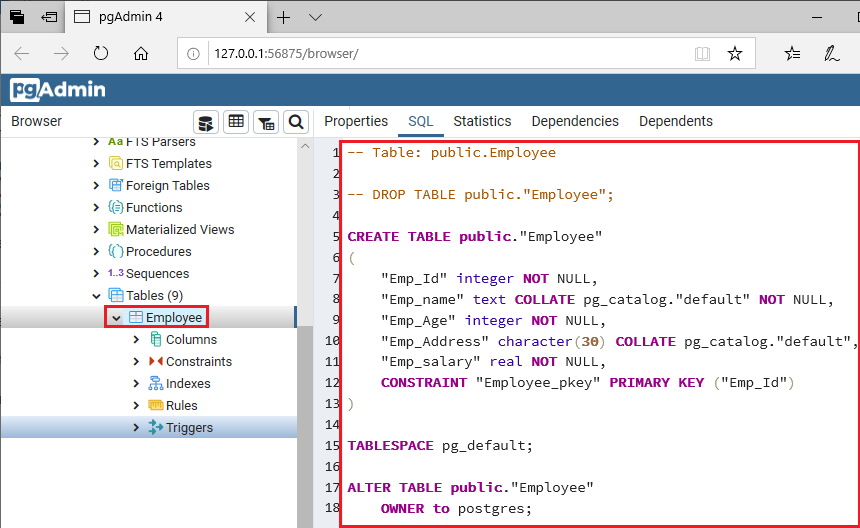
I want to add another column, but I keep getting the following error: Error 1062: Duplicate entry '' for key 'PRIMARY' SQL Statement: ALTER TABLE `mydb`. When loading data, indicates that the files have not been compressed.I have a MySQL database with a table that has 2 million rows using innodb engine. Raw Deflate-compressed files (without header, RFC1951). Zstandard v0.8 (and higher) is supported.ĭeflate-compressed files (with zlib header, RFC1950). Must be specified when loading/unloading Brotli-compressed files. When unloading data, files are automatically compressed using the default, which is gzip. When loading data, compression algorithm detected automatically, except for Brotli-compressed files, which cannot currently be detected automatically. When unloading data, compresses the data file using the specified compression algorithm. Snowflake uses this option to detect how an already-compressed data file was compressed so that the compressed data in the file can be extracted for loading. If the logic is more complicated (range of values, value based on another column, etc.), the only MySQL option is a trigger. To limit columns to a simple list of values, use the ENUM approach at the end of this answer. When loading data, specifies the current compression algorithm for the data file. I thought MySQL supported CHECK constraints and it didn't. TYPE = CSV ¶ COMPRESSION = AUTO | GZIP | BZ2 | BROTLI | ZSTD | DEFLATE | RAW_DEFLATE | NONE Useĭata loading, data unloading, and external tables Definition The tag value is always a string, and the maximum number of characters for the tag value is 256.įor details about specifying tags in a statement, refer to Tag Quotas for Objects & Columns. Specifies the tag name and the tag string value. INSERT with SELECT statement for columns with FOREIGN KEY constraint in MySQL with examples. Specifies the row access policy to set on a table. The syntax for each is slightly different.) ROW ACCESS POLICY policy_name ON ( col_name ) (Note that comments can be specified at the column level or the table level. The operation to copy grants occurs atomically in the CREATE TABLE command (i.e. Role that executed the CREATE TABLE statement, with the current timestamp when the statement was executed. If your column has, for example, a DEFAULT value, or a column comment, you need to specify it in the MODIFY statement along with the data type and the NOT NULL, or it will be lost.
#Mysql add column int constraint full
The SHOW GRANTS output for the replacement table lists the grantee for the copied privileges as the ALTER TABLE Person MODIFY PId INT(11) NOT NULL A word of caution: you need to specify the full column definition again when using a MODIFY query. The account (using GRANT IMPORTED PRIVILEGES on the parent database), access is also granted to the replacement

If the existing table was shared with your account as a data consumer, and access was further granted to other roles in If the existing table was shared to another account, the replacement table is also shared. Specifies to retain the access privileges from the original table when a new table is created using any of the following

Specifies a default collation specification for the columns in the table, including columnsįor more details about the parameter, see DEFAULT_DDL_COLLATION. A foreign key relationship involves a parent table that holds the initial column values, and a child table with column values that reference the. SELECT statements, or by creating and querying one or more streams on the table.įALSE does not enable change tracking on the table.ĭefault: FALSE DEFAULT_DDL_COLLATION = ' collation_specification ' MySQL supports foreign keys, which permit cross-referencing related data across tables, and foreign key constraints, which help keep the related data consistent. The change tracking metadata can be queried using the CHANGES clause for These columns consume a small amount of storage. Storing change tracking metadata in the columns. If you define a CHECK constraint on a table it can limit the values in certain columns based on values in other columns in the row.

If you define a CHECK constraint on a column it will allow only certain values for this column. This setting adds a pair of hidden columns to the source table and begins The CHECK constraint is used to limit the value range that can be placed in a column. TRUE enables change tracking on the table. When a column is added with ADD COLUMN, all existing rows in the table are initialized with the columns. Specifies whether to enable change tracking on the table. The key word COLUMN is noise and can be omitted.


 0 kommentar(er)
0 kommentar(er)
